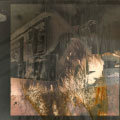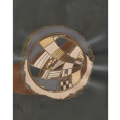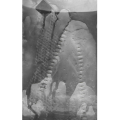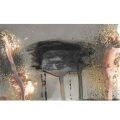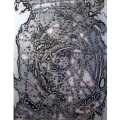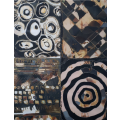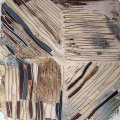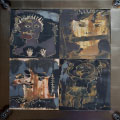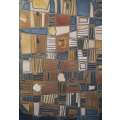Chemigrams
Making chemigrams involves experimenting with using light, common photographic developer and fixer, some resist if desired, and black and white photographic paper to create images. The chemicals affect the silver gelatin’s response to light in different ways. A chemigram can be created without any resist, or resist can be applied to hold back the chemical effects of the developer and fixer until slowly rubbed off the paper. Pierre Cordier developed this process in the 1950’s and is considered the pioneer of the chemigram.
While the aspect of a purely abstract image is appealing, I also wanted to combine chemigrams with photographic images, and therefore some images were exposed as lumens. For a lumen print, objects, transparencies, or negatives are placed on the unexposed photographic paper and then exposed to the sun rather than using an enlarger. After this process, the paper is treated with the chemicals. For some of my images I used the enlarger with a negative to combine a photographic image with a chemigram.


